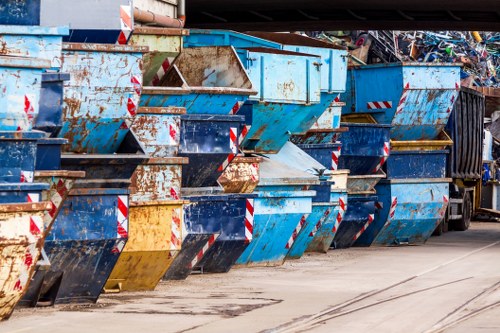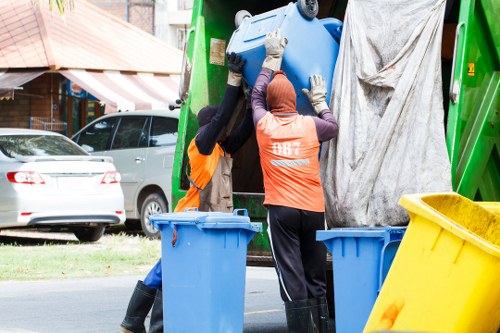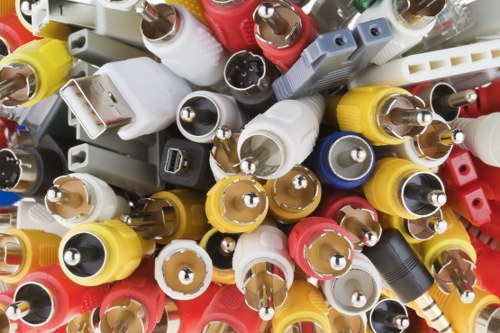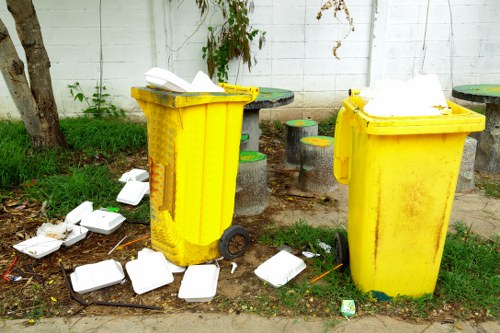Furniture Clearance in Waste Recycling
Understanding Furniture Clearance

Furniture clearance is the process of removing unwanted or unused furniture from homes, offices, and other spaces. This process is essential not only for decluttering but also for environmental sustainability. Proper furniture clearance ensures that items are disposed of responsibly, reducing the burden on landfills and promoting recycling practices.
When you decide to clear furniture, it’s crucial to consider the methods you use. Opting for waste recycling can transform old furniture into valuable resources, minimizing waste and supporting a circular economy. This approach benefits both the environment and communities by conserving natural resources and reducing pollution.
Engaging in furniture clearance through waste recycling involves several steps, including assessment, sorting, and processing. Understanding these steps can help you make informed decisions and choose the best recycling options available. Whether you’re decluttering your home or managing office furniture, waste recycling offers a sustainable solution.
Benefits of Waste Recycling in Furniture Clearance

**Environmental Impact**: Recycling furniture significantly reduces the amount of waste that ends up in landfills. By reusing materials, we conserve natural resources and reduce the need for new raw materials. This process also lowers greenhouse gas emissions, contributing to the fight against climate change.
Economic Advantages: Waste recycling creates economic benefits by generating jobs in the recycling industry and reducing disposal costs. It also provides opportunities for businesses to save money by selling or repurposing their old furniture instead of discarding it.
Aesthetic and Functional Gains: Repurposed furniture can add unique character to your space. By recycling, you can find vintage or refurbished pieces that enhance your home or office decor while maintaining functionality.
Types of Recycling Methods for Furniture

There are several methods to recycle furniture effectively:
- Donation: Donating furniture to charities or non-profit organizations can give items a new life and help those in need.
- Reselling: Selling used furniture through online marketplaces or second-hand stores is a great way to earn some money while promoting recycling.
- Repurposing: Transforming old furniture into new, functional pieces can be both creative and environmentally friendly.
- Recycling Centers: Specialized recycling facilities can break down furniture into raw materials for reuse in various industries.
- Professional Clearance Services: Hiring experts ensures that your furniture is disposed of responsibly and efficiently.
Steps to Effective Furniture Clearance

Clearance of furniture requires a systematic approach to ensure efficiency and sustainability:
- Inventory Assessment: Begin by evaluating the furniture you intend to clear. Determine the condition, usability, and potential for recycling or repurposing.
- Sorting and Categorizing: Separate items based on their material, condition, and recycling potential. This step simplifies the recycling process.
- Choosing Recycling Methods: Decide whether to donate, sell, repurpose, or take items to recycling centers based on your assessment.
- Engaging Professionals: For large-scale clearance, consider hiring professional services that specialize in furniture recycling and disposal.
- Transportation and Logistics: Plan the removal and transportation of furniture to ensure minimal environmental impact.
Challenges in Furniture Recycling

Despite the numerous benefits, furniture recycling faces several challenges:
- Logistical Issues: Transporting large or heavy furniture can be difficult and costly.
- Market Demand: There may be limited demand for certain types of recycled materials, affecting the feasibility of recycling efforts.
- Cost Factors: The cost of recycling processes can sometimes outweigh the benefits, particularly for low-value items.
- Consumer Awareness: Lack of awareness about recycling options and benefits can hinder participation in furniture recycling programs.
- Regulatory Barriers: Strict regulations and compliance requirements can complicate recycling operations.
Solutions to Enhance Furniture Recycling

To overcome the challenges in furniture recycling, several solutions can be implemented:
- Improved Logistics: Developing efficient transportation and collection systems can reduce costs and enhance the feasibility of recycling projects.
- Incentivizing Recycling: Offering incentives such as tax breaks or discounts can encourage more individuals and businesses to participate in recycling programs.
- Raising Awareness: Educational campaigns can inform the public about the importance and benefits of furniture recycling, increasing engagement.
- Innovative Recycling Techniques: Investing in research and development can lead to more cost-effective and efficient recycling methods.
- Policy Support: Governments can support recycling efforts through favorable policies, grants, and subsidies.
Best Practices for Sustainable Furniture Clearance

Adopting best practices ensures that furniture clearance is both effective and sustainable:
- Plan Ahead: Develop a clearance plan that outlines steps, timelines, and responsible parties to streamline the process.
- Prioritize Reuse: Before disposing of furniture, consider ways to repurpose or donate it to extend its lifecycle.
- Collaborate with Experts: Partnering with professional recycling services can enhance the efficiency and impact of your clearance efforts.
- Monitor Progress: Track the outcomes of your furniture clearance to identify areas for improvement and measure environmental benefits.
- Promote Circular Economy: Support initiatives that aim to create a closed-loop system, where products are reused and recycled continuously.
Conclusion: The Future of Furniture Clearance and Recycling

Furniture clearance plays a vital role in waste management and environmental sustainability. By embracing waste recycling, individuals and businesses can contribute to reducing waste, conserving resources, and promoting a healthier planet.
As awareness grows and recycling technologies advance, the future of furniture clearance looks promising. Emphasizing sustainable practices and overcoming existing challenges will pave the way for more effective recycling initiatives.
Take action today by choosing waste recycling for your furniture clearance needs. Not only will you declutter your space, but you’ll also make a positive impact on the environment.
Contact us today to learn more about our furniture clearance and recycling services. Let’s work together towards a greener, more sustainable future.